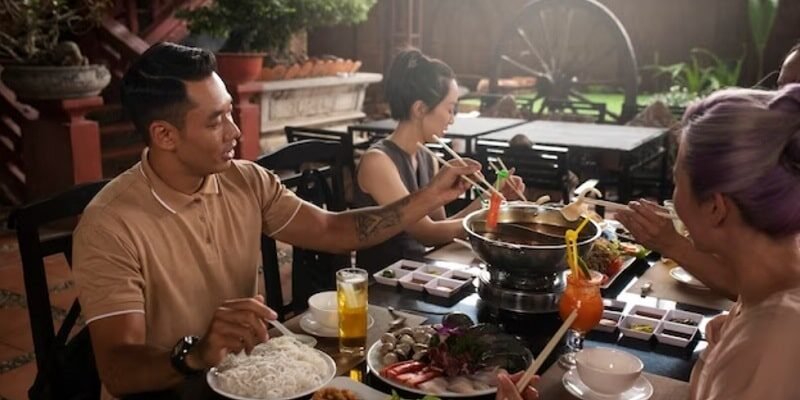
Experiencing the flavors and food culture unique to a destination is one of the most rewarding parts of travel. The whiff of spices in an open-air market, lingering over a leisurely meal, connecting with new people over shareable bites…these moments create lasting memories.
Beyond tantalizing our taste buds, culinary travel allows us to:
- Gain insight into a region’s history, ingredients, and traditions
- Support small businesses and chefs keeping food heritage alive
- Bond with locals over a common love of food
This article explores how to immerse yourself in local cuisine through restaurants, food tours, cooking classes, and other delicious adventures. Let’s savor some tips for memorable culinary travel!
Researching local cuisine and the best restaurants in different destinations
Thorough research before your trip will reveal each area’s signature dishes, must-try restaurants, and food experiences. Here’s how to get started:
- Consult food-focused travel guides like Eater, Infatuation, and Lonely Planet to discover highly-rated eateries.
- Sift through recent reviews and blogs for first-hand reports on newly opened spots and pop-ups.
- Check social media hashtags like #Foodie, #Yum, and the city name to find photogenic food generating buzz.
- Reach out to food-loving locals through social networks for personalized recommendations.
- Use restaurant booking platforms like OpenTable and Resy to explore menus and reserve tables.
Key factors to research
- Cuisine styles and regional specialties
- Trendy up-and-coming chefs
- Dining ambiance – quaint cafes, fine dining, food stalls
- Budget – high-end or affordable options
- Local ingredients and beverages
Food tours, cooking classes, and other culinary experiences
To fully immerse yourself in the food culture, consider these active and educational experiences:
Food tours
These walking tours stop at multiple eateries and markets to sample local delights and learn about food history.
Cooking classes
Hands-on instruction in preparing traditional recipes helps you hone culinary skills.
Restaurant weeks
Prix fixe menus at discounted prices allow you to explore top restaurants during dining festivals.
Night markets and food halls
Informal settings like Singapore hawker centers and Barcelona’s La Boqueria market offer bountiful choices.
Farm and factory tours
See first-hand where ingredients like wine, coffee, and chocolate come from.
Foraging hikes
Guided walks teach you to harvest mushrooms, wild herbs, seaweed and other edible bounty.
Tips for trying new foods and flavors
Don’t be afraid to push your palate outside its comfort zone with these tips:
- Taste a little bit of unfamiliar dishes to gradually acclimate your tastebuds.
- Ask wait staff for recommendations on portion sizes and dishes for first-timers.
- Try the regional beverage paired with each area’s cuisine, like masala chai with Indian food.
- Join food tours and classes focused on street food to try smaller samples of different items.
- Order vegetable-centric dishes to enjoy new-to-you flavors while avoiding allergies.
- Carry antacids, antihistamines, and medications in case you have trouble tolerating rich or spicy cuisine.
- Focus on the cultural experience more than trying every dish if you have strict dietary needs.
Supporting local businesses and communities through food tourism
We can positively impact communities by supporting local eateries and food suppliers:
- Spend at family-run restaurants instead of big hotel chains.
- Book food experiences benefiting marginalized or underserved groups.
- Purchase cookbooks and pantry items directly from small vendors.
- Choose tours highlighting heirloom ingredients, small producers, and traditional cooking methods to help keep culinary traditions alive.
- Learn about ethical concerns and tipping customs to ensure tour guides and servers earn fair wages.
- Follow relevant hashtags and share photos from restaurants and tours to boost their visibility.
Conclusion
Next time you travel, plan activities around savoring all the flavors and moments of joy the destination has to offer. Avoid tourist trap restaurants with mediocre fare. Venture instead to places recommended by food-focused travel sites and locals in the know. Try that humble street stall, lively night market, or chef’s counter tasting menu. Immersing yourself in the food culture unlocks a deeper, richer experience – one delicious bite at a time!
Here are three key takeaways:
- Do thorough research to discover highly rated and buzzworthy food spots in a destination.
- Join interactive experiences like food tours and cooking classes for a hands-on cultural immersion.
- Support small, local restaurants, markets, and tour operators to economically uplift communities.













